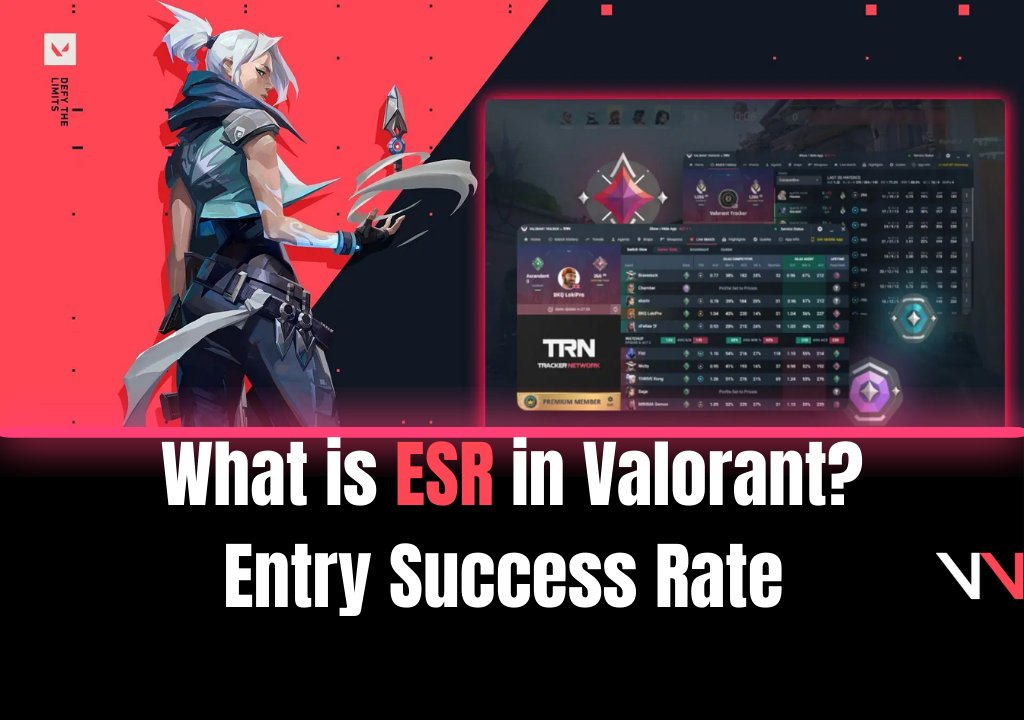What is ESR in Valorant? Entry Success Rate Explained
In Valorant, success isn’t just measured by your kill count. A deeper performance indicator, especially for Duelists and aggressive players, is Entry Success Rate (ESR). This advanced stat reflects how effective a player is at initiating attacks and creating early advantages for their team.
Let’s break down what ESR means, how it’s calculated, why it matters, and how you can improve yours to dominate your role as an entry fragger.
Understanding Entry Success Rate (ESR) in Valorant
Entry Success Rate (ESR) measures a player’s impact as the first engager during a site push. This is most relevant for roles like Duelists—Jett, Raze, Reyna, Phoenix—who are often tasked with taking the first peek and leading site entries.
A high ESR means you’re either:
- Scoring the first kill of the round (First Blood)
- Forcing favorable engagements that let your team follow up and secure the site
It’s a crucial metric for evaluating space creation, risk-taking effectiveness, and early-round impact.
How is ESR Calculated in Valorant?
The formula is straightforward:
ESR = First Bloods / (First Bloods + First Deaths)
This ratio tells you how often your entries result in an opening kill rather than an early death.
- First Bloods: You get the first kill in a round
- First Deaths: You’re the first to die in a round
A good ESR (typically above 55%) indicates you’re helping your team by reliably winning opening engagements or at least trading positively.
Why ESR Matters in Valorant
In tightly contested matches, first kills often decide rounds. A strong ESR:
- Creates early 5v4 advantages
- Pressures defenders to rotate or panic
- Forces defenders out of position
- Opens up plant opportunities and better map control
Pro teams and analysts frequently use ESR to evaluate Duelist effectiveness and entry coordination. It’s a reflection of both individual aim and team synergy.
How to Improve Your ESR in Valorant
To boost your ESR, focus on these key areas:
1. Improve Crosshair Placement and Reaction Time
Sharpen your aim with routine DM warmups and focus on pre-aiming common angles before pushing.
2. Use Utility Wisely
Don’t dry peek. Combine your entries with flashes, dashes, stuns, or smokes. Proper ability usage can blind or displace enemies, giving you the upper hand.
3. Communicate Entry Plans
Sync with your Initiator or teammates to avoid solo plays. Enter with traded potential and call your angles.
4. Learn Timing and Map Awareness
Good entry fraggers understand defender positioning and timing. Don’t rush into predictable traps. Time your pushes with team utility or misdirection.
5. Review Your Own Gameplay
Use ValorantValue.com to analyze your ESR, first kills, and positioning stats to identify improvement areas.
Final Thoughts
ESR in Valorant is more than just a number—it’s a reflection of your impact in opening duels and setting up your team for success. If you’re playing an aggressive role, tracking and improving your ESR will make you a stronger asset in every game.
Need help mastering your Duelist or entry role? Get coached by top-tier Radiant players at N1Boost.com.
For stat tracking, weapon value checks, and crosshair analysis, visit ValorantValue.com—your trusted companion for becoming a smarter, sharper Valorant player.
Tags
Jettor
Author



